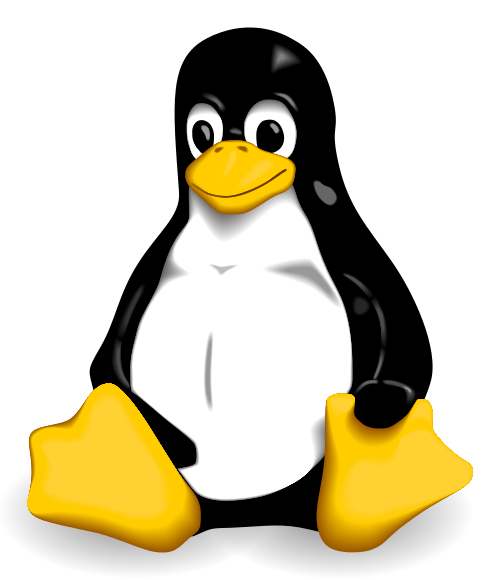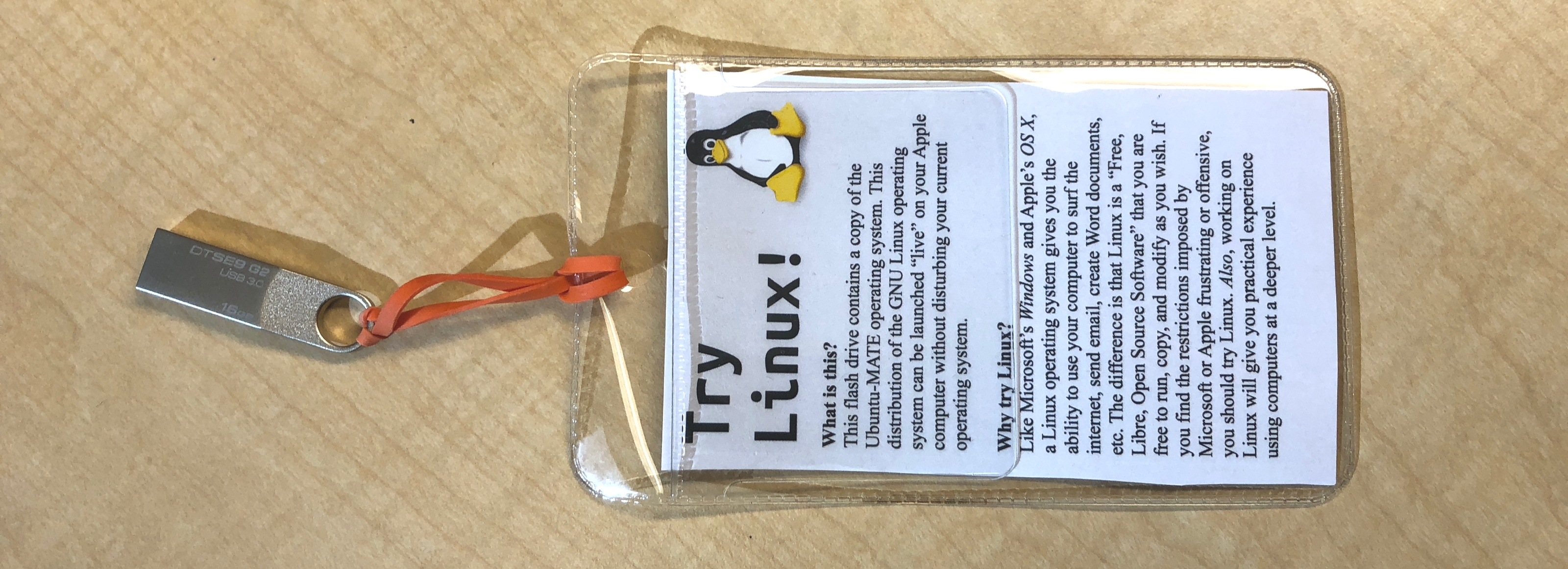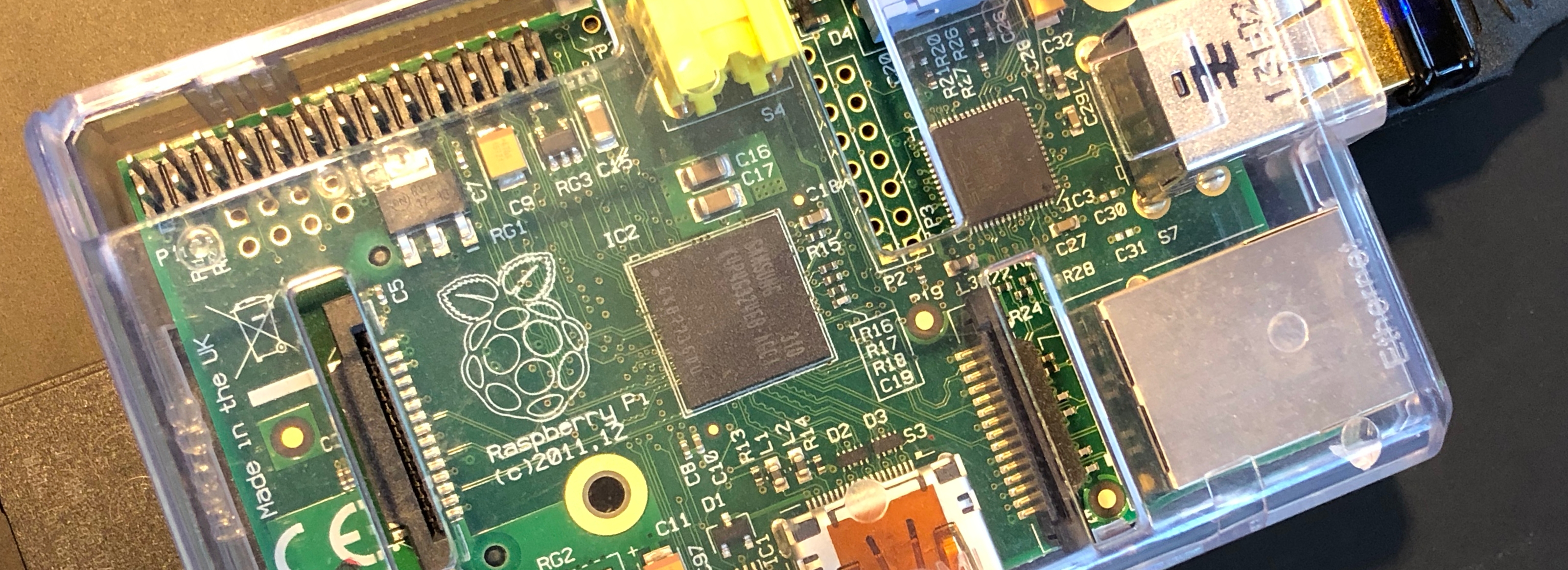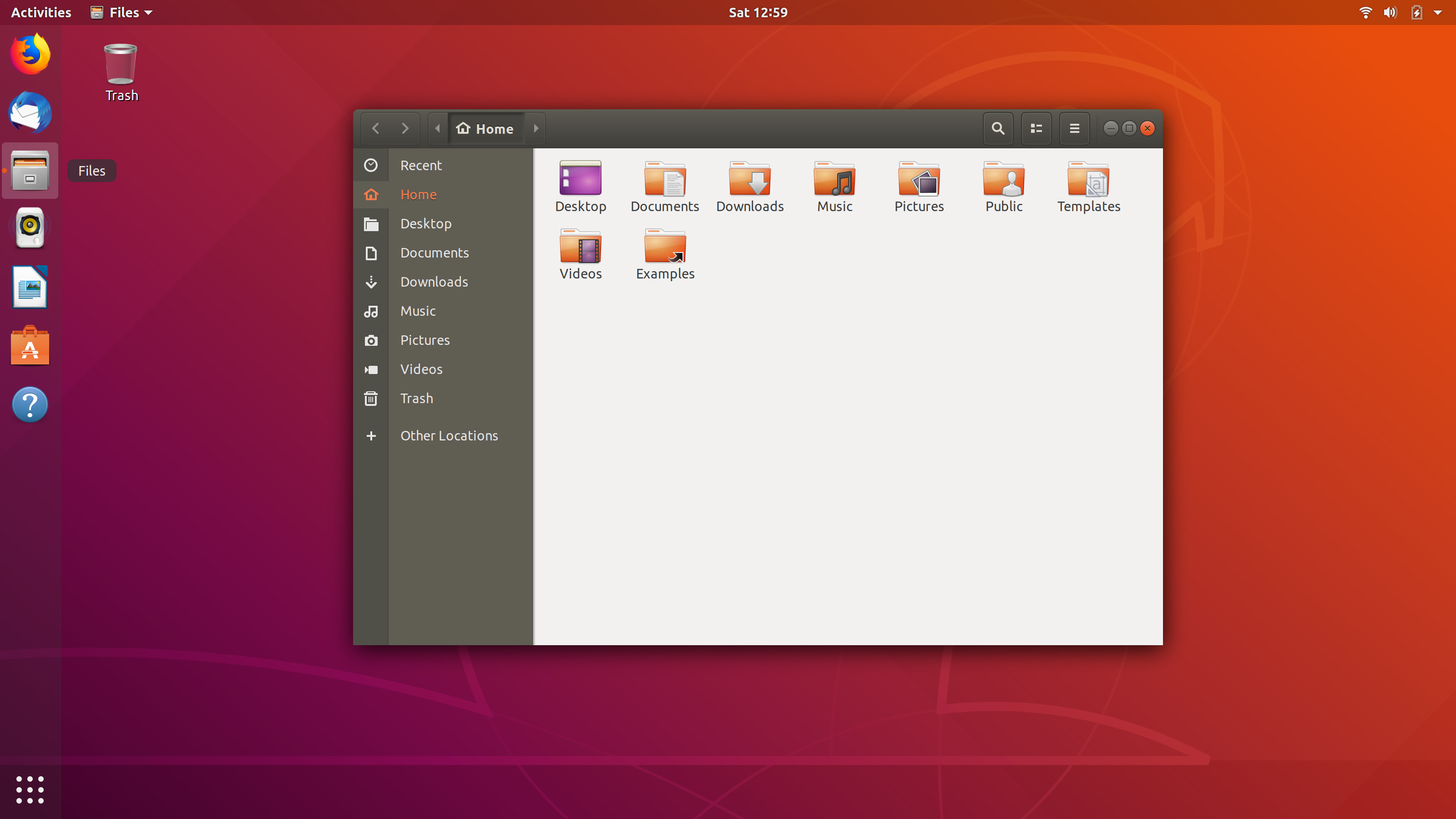
Try Linux!
Okay, so you've decided you want to check out the Linux operating system, but you're not sure where to go from there. This document will give you a brief introduction to what Linux is, and then give you some ideas for things you can try out with a Linux operating system.
What's with the penguin?
The penguin, nicknamed "Tux," is the mascot of the Linux OS.
What is Linux, anyway?
Linux, roughly speaking, is a collection of free, open-source software packages that together serve as an operating system for a computer, the same way that Microsoft's Windows and Apple's macOS do.
There are variations on the Linux OS called distributions, and the most popular of these is Ubuntu.
How do you pronounce "Ubuntu?"
"Ubuntu" is pronounced in lots of different ways, but the official pronunciation (it's a South African word) is with long-u sounds and an accent on the second syllable: "oo-BOON-too".
Four ways to play with Linux
How great is Linux? There are four ways that you can play around with Linux. Not all of these are do-able for everyone, so pick one that you like and give it a go!
1. Boot into a live Linux distribution
Unlike other OSes, Linux allows for booting a "live" version of the software, which can run off a CD, DVD, or USB flash drive without having to be actually installed on a computer. When you use Linux in this way, the OS runs more slowly than a regular installation would, but it's nice to be able to try out Linux without going through that full process.

If you don't currently have one of these live distribution drives you can either borrow one from me or follow these instructions to make your own.
Assuming you already have a live distribution—this tutorial assumes you have a copy of Ubuntu-MATE on a USB flash drive—you can follow the instructions below to boot it up.
2. Try out a Raspberry Pi
A Raspberry Pi is a small, Linux-based computer that can be had for $35 or so. If you have one of these you can plug a keyboard, mouse, and HDMI monitor into it and start exploring.

The RPi is an excellent place to start playing around with Linux. If you're interested in checking one of these out, contact me and I'll be happy to loan you one!
3. Install Linux onto an old PC laptop or tower
If you want to get the full Linux experience, install Ubuntu MATE onto an old computer and see how it works! More information on how to do that can be found here.
4. Log on to a Linux server
This last option isn't for the faint of heart. You'll need to launch your Terminal and enter a userID and password on a server for which you have an account. If you're interested in pursuing this option, contact me and I can provide you with credentials on a server for experimentation.
Still with us? Let's take a look and see how you can use a USB live distribution to Try Linux!
Booting into a live Linux distribution
Assuming you're going to try out a "live" distribution, let's get started!
- Shut down your computer.
- Insert the Live flash drive into a USB slot on your computer. Note that Macs and PCs each require a different flash drive, so make sure the one you have is for your type of computer.
-
- On a Mac:
Turn on your computer and hold down the “option” key while it starts up. Select “EFI Boot” when presented with a choice of boot drives. - On a PC:
Interrupt the normal boot process by pressing one of the function keys (often F12). If you're using a Windows 10 computer and this doesn't work, you may have to reset your UEFI settings. (See here for how to do that.)
- On a Mac:
- On the next screen, select “Try Ubuntu without installing.” Do not select “Install”!
- Once Ubuntu has started up, connect to a wifi source and start looking around. Surf the internet. Look at the applications. Play a game. Launch a Terminal and try to connect with a server.
Desktop Orientation
Different versions of Linux have different looks, with different backgrounds and slightly different interfaces. You might be used to seeing a Windows "Task Bar" along the bottom of the screen or a macOS "Dock" at the bottom or side of your Desktop. An Ubuntu desktop will have the same type of interface, often with a "Launcher" along the left side of the screen.
Click on the icons in the Launcher to launch a web browser or other application, or click on "Activities" in the upper left corner to look for an application on the computer. If you're Linux looks different or you don't have a Launcher, don't panic. Click around until you find a pop-up menu that will allow you to select an application or feature.

Running applications
Most Linux distributions come with a few applications installed by default, including a web browser, an email client, a program that will play music files, some default games, etc.
The Internet
If you use a computer for web browsing and email only, you won't see much difference between Windows, macOS, and Linux: launch the Firefox web browser or download Chrome and you'll be all set to go.
You'll need to get your wifi set up, though. Again, depending on your version of Linux, there might be a gear-shaped icon somewhere that you can click on to configure your wifi, or there might be a networking icon in the upper-right corner of the screen that you can use to get things set up.
Once you're connected, surf to your heart's content!
Productivity
Google Docs works just fine in a browser, of course. If you're more of a Microsoft Office person, you can use the LibreOffice suite of applications. It may be already installed, or you can download it from their website.
Games
Linux isn't used for gaming very much, with the exception of the Steam platform. If you have a Steam account, check to see what kinds of games are available for you to download for Linux.
Otherwise, you're pretty much stuck with Minesweeper, Solitaire, Tetris, and a few other classics. Take a look through the Applications interface to see what's already on your machine and/or what's available for you to install.
The Terminal
A terminal console is the heart-and-soul of some people's Linux experience, so there's a shortcut to launch it: ctrl-alt-T. Easy!
Where to go from here?
Most people don't leave Windows or macOS for Linux in a heartbeat. Linux has its own quirks, just like any operating system, and it might take a little while before you decide you want to explore further.
One way of continuing to experiment with Linux is to boot into a Live distribution from time to time. That way you can give yourself a little time to get used to a different way of doing things.
Also, some people install Linux on a second computer, maybe an old tower or laptop that's lying around. Working on a Linux installation, you get a better sense of the full experience. You can learn about my own experiences with adopting a "Linux lifestyle" at https://www.crashwhite.com/ubuntu.